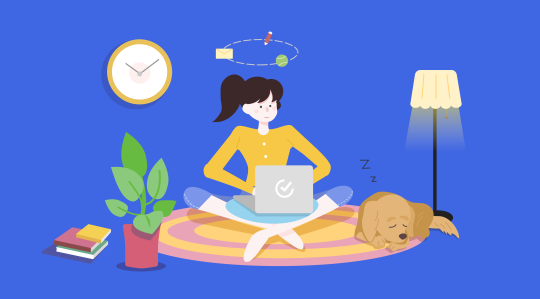
When we hear people saying "Have a break", what naturally comes to mind is doing nothing, perhaps just lying down and taking a nap. Indeed, sleeping is a good way to eliminate fatigue and help recharge ourselves. However, it's not the only way to give your brain a break. What we'll introduce today is another interesting method that may also help maintain the balance between work and rest: Moffatt’s Method.

What is Moffatt’s Method?
Moffatt is a Scottish Theologian who produced one of the best-known translations of the Bible. According to Gossip (1944), in Moffatt’s study, there were three tables. Each was gathered articles and books on different subjects. For example, one was work-related, e.g. the translation of the New Testament; one was his paper draft and another was a detective novel. He would work for hours with adsorbed concentration; and when weary rises, stretch himself and stroll to the next table. After refreshing his mind with some hours of hard toil on the new topic there, perhaps then move to the third!

Why does Moffatt’s Method work?
Switching between tables and topics is Moffatt’s way to avoid staying in the same tension for a long time, while still maintaining focus and work streaks. Well, does it really work? why?
We might all know that the left hemisphere of our brain is responsible for people’s language expression, logic, and reasoning. The right half is for non-verbal activities, perceptions, and feelings. Therefore, the left hemisphere is active when we deal with work like writing articles, making plans, and solving tough problems. Conversely, work such as copying materials, transcribing, sending faxes, etc., requires more use of the right brain. If we divide the tasks into these two categories and alternate them, our left and right brains will take turns to rest. This can thus help ease fatigue, and increase efficiency.

How can we make use of Moffatt’s Method?
Besides switching places and topics of work like what Moffatt did, we can also extend this idea by mix-grouping tough and easy tasks, thinking-based and less skill-required, input-inclined and output-inclined, so on and so forth.
I’ll give you more examples:
- Abstract + Concrete
If you are learning a new concept in History or Art, combining abstract and concrete materials might be a good way to keep the balance. Our brains function differently when processing different types of information. Therefore, after reading “text information” like journals and articles for a while, move to more concrete information, e.g. pictures or documentaries, to instill a little freshness into your body.
- Input + Output
Inputting information can be combined with outputting. For example, if you are learning a new language, e.g. English, and you wish to improve your speaking skills. Instead of just keep talking in English non-stop till draining yourself up, maybe picking a good English movie to watch for a while can be a good addition. Without changing the purpose of improving oral English, your brain still gets some rest in that way.
- Static + Dynamic
When sitting there reading for some time, why not take your book to the garden, read while walking on the grass, and enjoying the breeze? Getting tired of the silence in the library, why not hit a nice cafe and study with a latte and music? After working alone on a topic for some hours, why not invite someone to join you and discuss it for a bit? Changing the environment from static to dynamic like that may help get rid of boredom and tiredness.
- Tough + Easy
Combining a tough task with an easy one is also the way to give your brain regular breaks. For example, tasks that need full concentration and high mental skills, such as planning and writing, can be bonded with other comparatively simple tasks such as making PPT and tidying up the documents. Let your brain “go on strike” after being kept high-strung for a long period.
Wrap up
The core concept underneath Moffat’s Method is, your brain needs vocations from time to time. By combining and switching between different types of tasks, or different ways/environments to do the tasks, it's not only good for time management but also helps ease nerves and avoid burnout.


